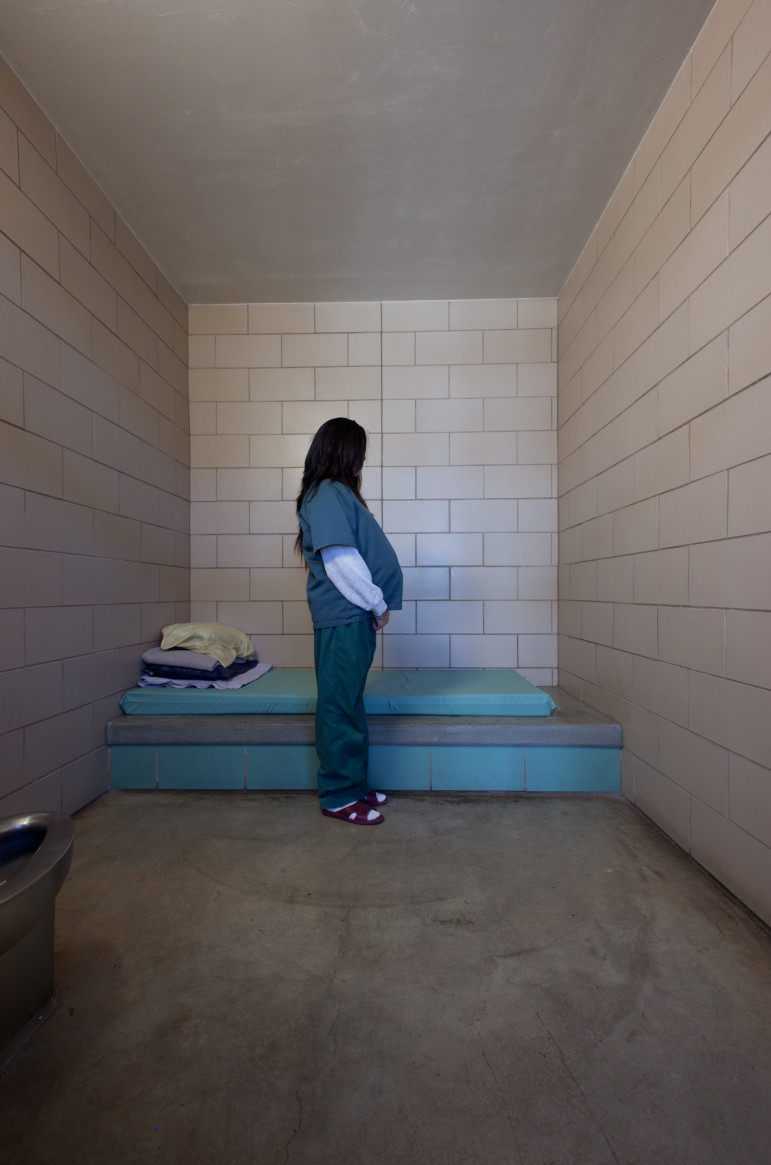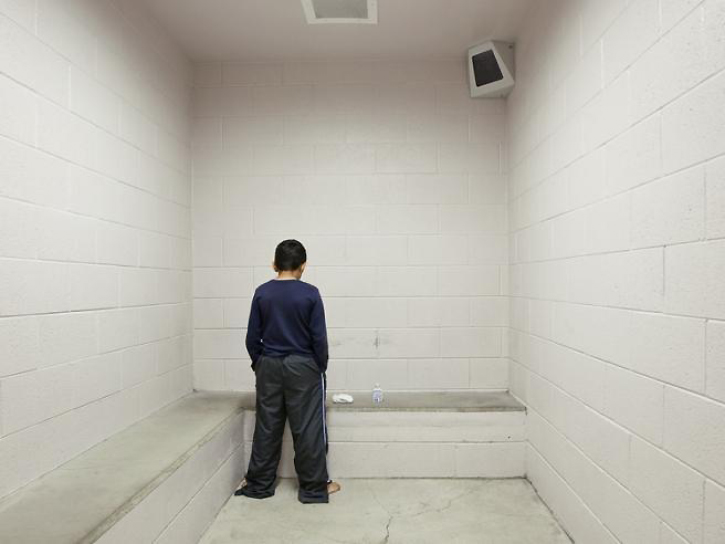
Richard Ross
“I always felt I needed [my boyfriend] to be loved and to help out. He’s a junior. My only crime was running away. But I’ve been here more than nine times. I’ve been here two weeks.” —C.M. 16. Eight months pregnant.
The 10-year-old boy stands with his back to the camera and his hands in his pockets in a bare white cinderblock cell in the juvenile detention center.
In text beneath the haunting image, the boy explains: “I’m waiting for my mom to come get me. … She’s at work today. I want to go home. I got in trouble at school today.”
Another image shows a full-length silhouette of a pregnant 16-year-old girl in a cell who says her only crime was running away from home.
They’re among the 15 images by photographer Richard Ross being showcased this week in an exhibit on juvenile detention in the Senate Rotunda of the Russell Senate Office Building in Washington.
The Act4 Juvenile Justice advocacy group, with the help of Sen. Bob Casey, D-Pa, is hosting the exhibit, “Juvenile In Justice,” on display through Friday.
The event marks the 40th anniversary this week of the landmark 1974 Juvenile Justice and Delinquency Prevention Act (JJDPA).
Ross, a 67-year-old distinguished professor of art at the University of California, Santa Barbara, traveled to more than 30 states and visited 300 juvenile detention centers, where he photographed more than 1,000 children over nearly five years.
The photos on exhibit this week appeared in Ross’ acclaimed 2012 book, “Juvenile In Justice.”

Richard Ross
“I got kicked out of school for partying and truancy. I use meth. They have had me here for two weeks. I think they keep me here because they think I am a risk of hurting myself. When they want to come in, they come in, they don’t knock or anything — this is the observation room …” C.T., age 15.
The Office of Juvenile Justice and Delinquency Prevention reports that 20 percent of children who are detained for status offenses — such as skipping school and other nondelinquent behaviors — are placed in living units with a young person who has committed murder or manslaughter. Research has shown that suicide rates among incarcerated youth are more than four times higher than they are among youth who are not incarcerated.
Juvenile justice advocates hope the exhibit brings attention to efforts to persuade congressional lawmakers to reauthorize the JJDPA.
Speaking of senators and others who see his exhibit, Ross said: “I hope that they realize that lives are at stake and that there’s nothing abstract about this, and the places that they hold these kids are inappropriate and they have it within their power to alter that fact.
“Often, you get these works displayed in places that will say, ‘Oh, this is such a shame but [people] are impotent to actually do anything. Well, in this environment, the audience is not impotent. They’re the policymakers.”
Juvenile justice advocates are pressing for a ban on court exceptions to a JJDPA “core protection” calling for deinstitutionalization of “status offenders” — or those who commit offenses that wouldn’t be crimes for adults (like truancy, running away from home or alcohol possession).
The number of status offenders detained had dropped markedly after the JJDPA linked the core requirement to federal funding. But in 1980, the act was amended to include an exception allowing judges to confine a youth for a status offense if the youth had violated a valid court order not to repeat the offense.
Today, more than half of U.S. states continue to allow use of the valid court order exception to detain youths charged with status offenses. The Office of Juvenile Justice and Delinquency Prevention has reported about 12,000 annual uses of the exception nationwide.

Richard Ross/Juvenile In Justice
“I’m waiting for my mom to come get me. Is she in there? She’s at work today. I want to go home. I got in trouble at school today.” R.T., age 10.
In 2011-12, U.S. schools referred 260,000 of their students to law enforcement; 92,000 students were arrested for school-related issues, according to the U.S. Department of Education Office for Civil Rights. These young people were disproportionately black students and students with disabilities. They are part of what’s known as the “school-to-prison pipeline,” and include children who, for example, are chronically truant due to bullying at school or get into fights at school as a result of unmet mental health needs.
These photos and others are available in book form at Juvenile-In-Justice.com.